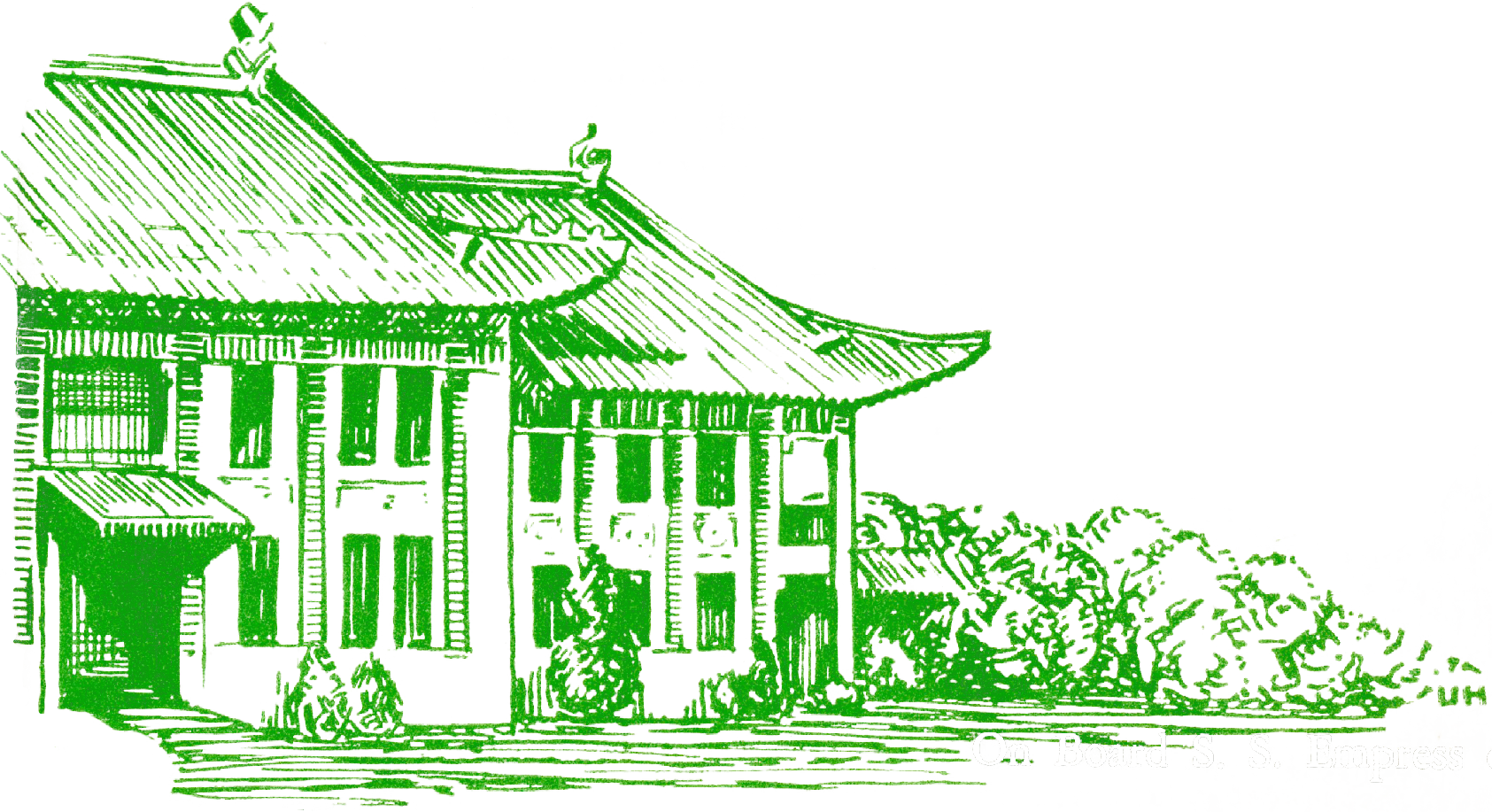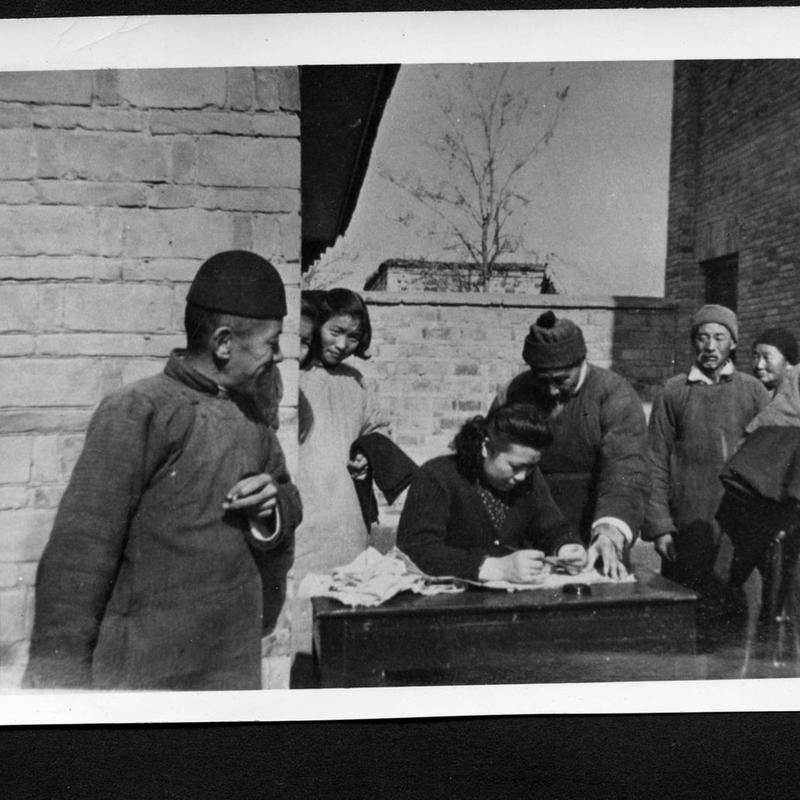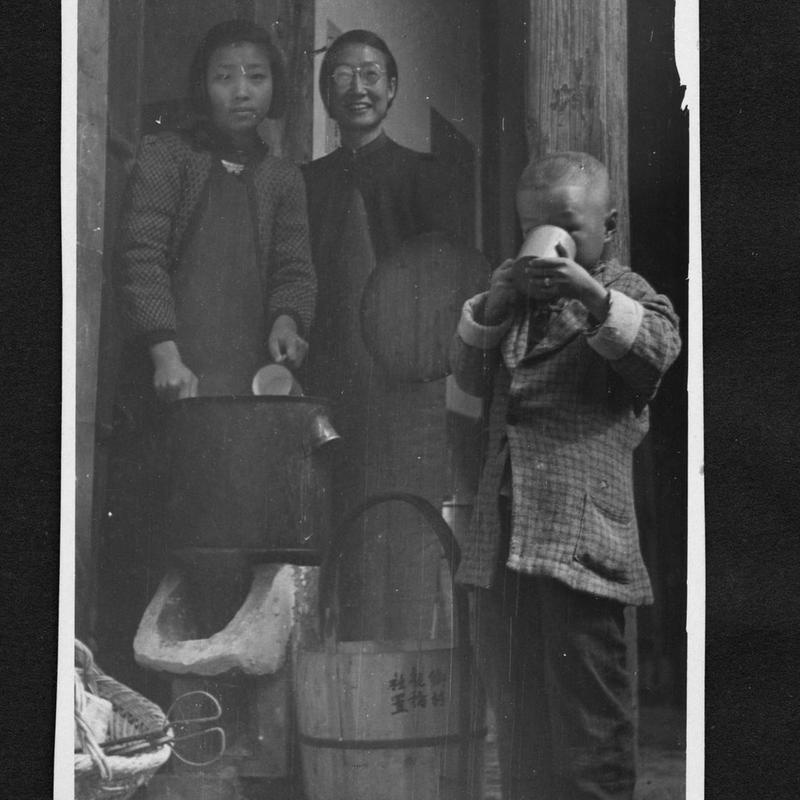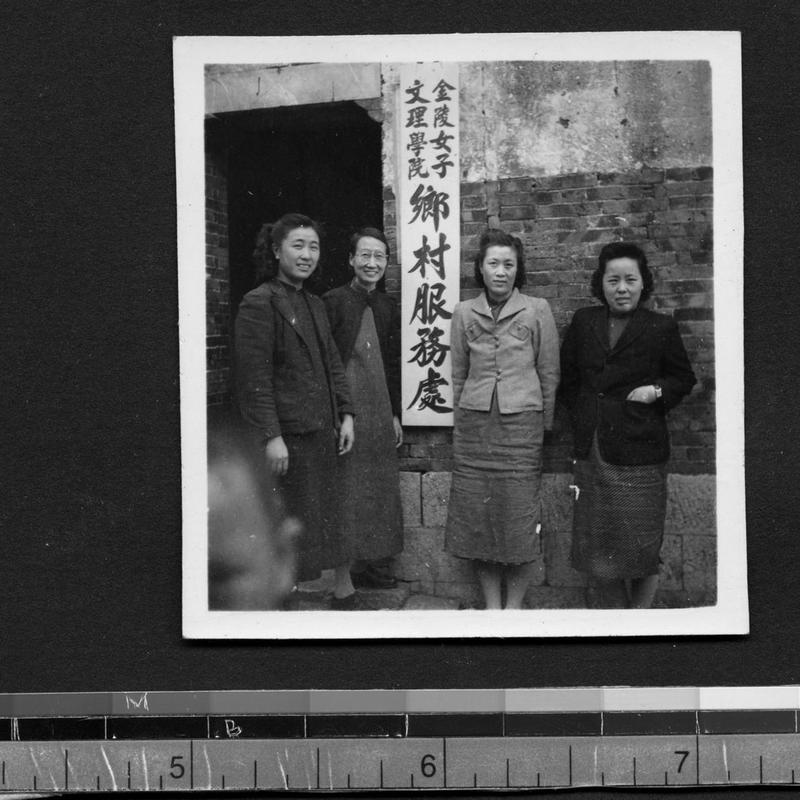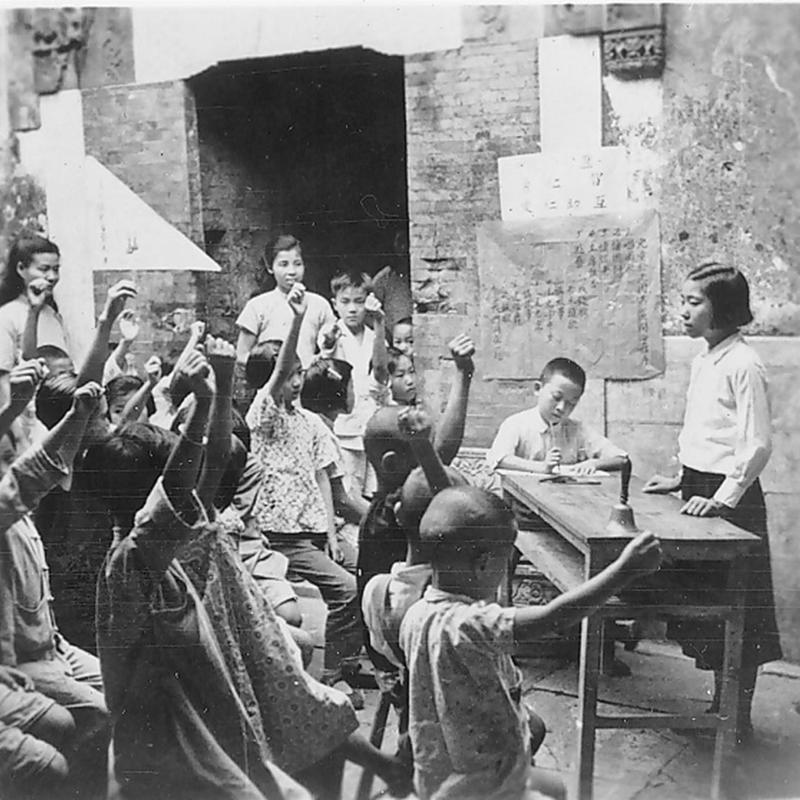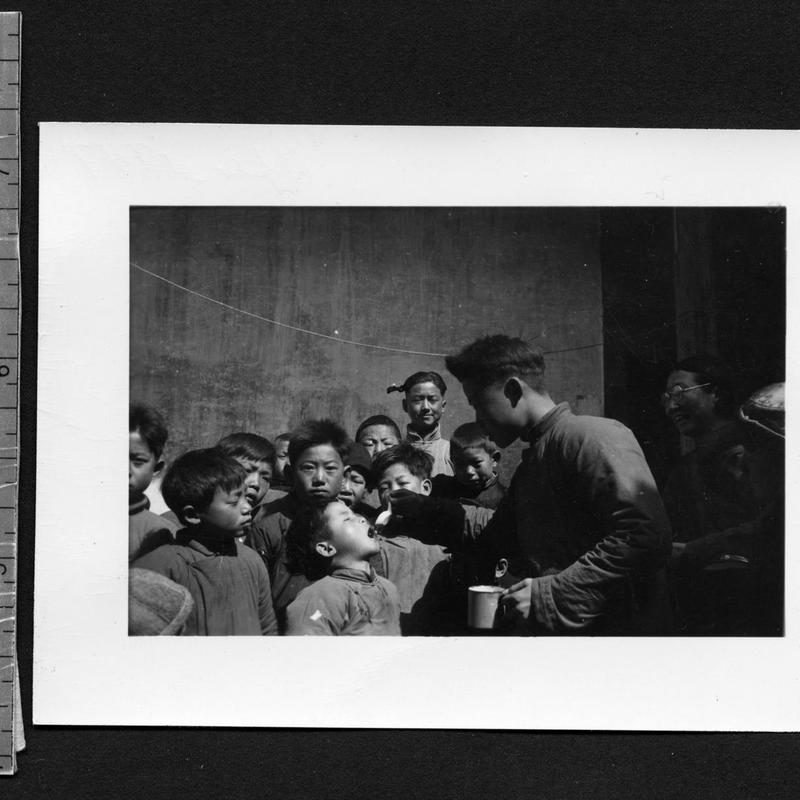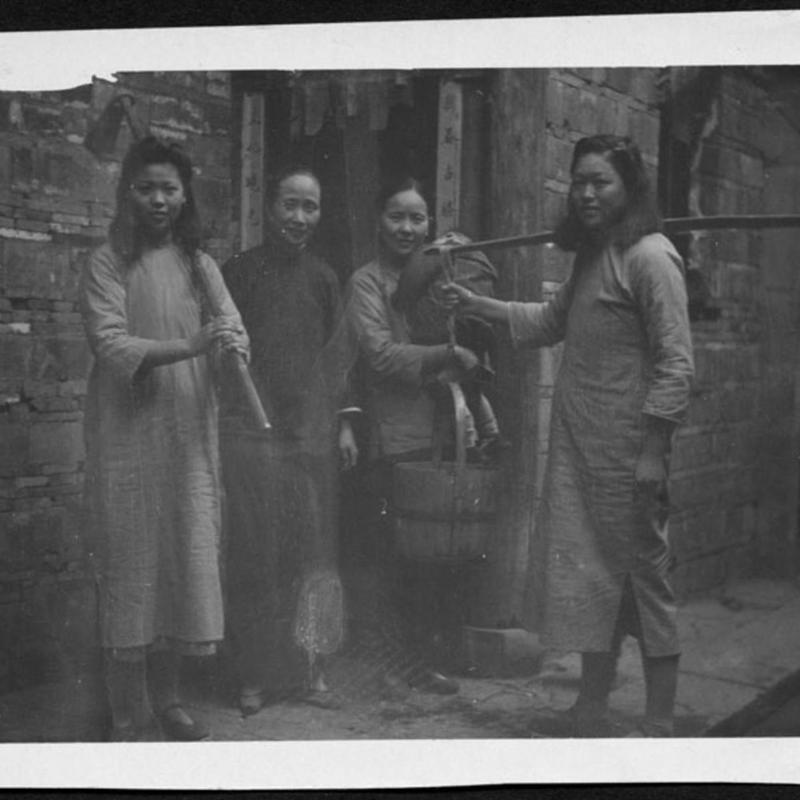Shwen Hwa Cheng, Szechuan, China
Alternative Title
Chunhuazhen, Sichuan, China
Description
After Ginling's return to its Nanking campus in 1946, it opened a new rural service station in Shwen Hwa Cheng, a village right outside Nanking. This station continued the work done in Western China, focusing on child and maternal care.
In September of 1946, Tsu Yu-dji writes of the difficulty of finding a suitable location for a Service Station near Nanking. After moving back to the Ginling Campus in Nanking following the war, the school wished to continue its rural service work, which had thus far been success, in an area easily accessible to the campus. Therefore, they settled on Shwen Hwa Cheng, a completely rural town about 12 miles from Nanking and easily accessible by bus. This area included several small shops and a large expanse of farmland. Under the supervision of the Nanking Theological Seminary, the town already had an established church and a strong Christian presence prior to the direct influence of Ginling students. Tsu Yu-dji was an active facilitator of establishing Ginling’s Service Station in the area, along with the help of two other staff members form the college, Giang Yen-wen and Shih Loh-so.
As soon as they had found a building, representatives from Ginling began to provide services for the community in Shwen Hwa Cheng. Many of these services sought to help with rebuilding and rehabilitation after Japanese occupation during the war, which had left farms neglected, buildings destroyed, and poor health and economic conditions. The health services provided in Shwen hwa Cheng included midwifery, vaccinations, and physical examinations. Other services included a milk-feeding station, a nursery, educational programs, and welfare work. Many of these efforts were supported financially by the Chinese National Relief and Rehabilitation Administration. The town’s reliance on farmwork made the need for a nursery even greater. While many adults spent their days in the fields, young women from Ginling looked after young children ages 2-5. They created activities for them and tended to their health and nutritional needs. The nursery school program was so successful that ten different nurseries were established in neighboring villages to satisfy the needs of nearby communities. The purpose of these programs was twofold: to occupy and educate children during the day and to model childcare skills for mothers. Through home visits, parent meetings, and formalized observation of nursery operations, Ginling students influenced the family dynamics of the students they taught beyond the space of the classroom.
Ginling students also ran educational programs for older children, ages 6-14. In these “clubs,” children participated in knitting, singing, toy-making, and drama programs — activities geared toward developing practical skills, leadership, and good citizenship. Girls and women also took literacy classes, as the report states up to 90% of women in the area had not previously learned how to read. In addition to childcare and literacy training, women were also taught marketable skills, in order to increase their income. They were trained in industrial work, specifically garment and craft production (sewing, cross-stitching, paper-cutting, etc.). In this case, it is evident that Ginling students sought to help women in Shwen Hwa Cheng become financially independent and contribute to their families, while still working within a traditionally domestic framework. While men also benefited from literacy programs, health care, and other resources, Ginling’s focus was often on the development and support of women and girls.
The service station served as a resource for both the residents of Shwen Hwa Cheng and the students of Ginling. Even for students who were not stationed in the town full-time, students studying sociology, geography, and home economics often came to the service station to do fieldwork and research during school vacations and weekends. In 1948, Ginling planned new building projects to further develop the town of Shwen Hwa Cheng. Construction began on a bath house, playground, traveling library, a farmer’s institute, and a new base for Ginling’s operations. Even after a shift in government in 1949, the service station continued to provide services to the residents of Shwen Hwa Cheng and received support from the Communist government and local leaders and communities.
In September of 1946, Tsu Yu-dji writes of the difficulty of finding a suitable location for a Service Station near Nanking. After moving back to the Ginling Campus in Nanking following the war, the school wished to continue its rural service work, which had thus far been success, in an area easily accessible to the campus. Therefore, they settled on Shwen Hwa Cheng, a completely rural town about 12 miles from Nanking and easily accessible by bus. This area included several small shops and a large expanse of farmland. Under the supervision of the Nanking Theological Seminary, the town already had an established church and a strong Christian presence prior to the direct influence of Ginling students. Tsu Yu-dji was an active facilitator of establishing Ginling’s Service Station in the area, along with the help of two other staff members form the college, Giang Yen-wen and Shih Loh-so.
As soon as they had found a building, representatives from Ginling began to provide services for the community in Shwen Hwa Cheng. Many of these services sought to help with rebuilding and rehabilitation after Japanese occupation during the war, which had left farms neglected, buildings destroyed, and poor health and economic conditions. The health services provided in Shwen hwa Cheng included midwifery, vaccinations, and physical examinations. Other services included a milk-feeding station, a nursery, educational programs, and welfare work. Many of these efforts were supported financially by the Chinese National Relief and Rehabilitation Administration. The town’s reliance on farmwork made the need for a nursery even greater. While many adults spent their days in the fields, young women from Ginling looked after young children ages 2-5. They created activities for them and tended to their health and nutritional needs. The nursery school program was so successful that ten different nurseries were established in neighboring villages to satisfy the needs of nearby communities. The purpose of these programs was twofold: to occupy and educate children during the day and to model childcare skills for mothers. Through home visits, parent meetings, and formalized observation of nursery operations, Ginling students influenced the family dynamics of the students they taught beyond the space of the classroom.
Ginling students also ran educational programs for older children, ages 6-14. In these “clubs,” children participated in knitting, singing, toy-making, and drama programs — activities geared toward developing practical skills, leadership, and good citizenship. Girls and women also took literacy classes, as the report states up to 90% of women in the area had not previously learned how to read. In addition to childcare and literacy training, women were also taught marketable skills, in order to increase their income. They were trained in industrial work, specifically garment and craft production (sewing, cross-stitching, paper-cutting, etc.). In this case, it is evident that Ginling students sought to help women in Shwen Hwa Cheng become financially independent and contribute to their families, while still working within a traditionally domestic framework. While men also benefited from literacy programs, health care, and other resources, Ginling’s focus was often on the development and support of women and girls.
The service station served as a resource for both the residents of Shwen Hwa Cheng and the students of Ginling. Even for students who were not stationed in the town full-time, students studying sociology, geography, and home economics often came to the service station to do fieldwork and research during school vacations and weekends. In 1948, Ginling planned new building projects to further develop the town of Shwen Hwa Cheng. Construction began on a bath house, playground, traveling library, a farmer’s institute, and a new base for Ginling’s operations. Even after a shift in government in 1949, the service station continued to provide services to the residents of Shwen Hwa Cheng and received support from the Communist government and local leaders and communities.
References
Media
Date
1946
Coordinates
118.7916458,32.0609736
